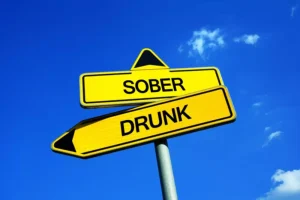
Experience machines are meant as a cautionary tale, and yet already, legal ketamine clinics are halfway to realizing them. Walk into any of the centers scattered around a place like New York City and you’ll find people floating, womb-like, in zero-gravity recliners, wearing eyeshades and earphones that cut them off from other people and the outside world, a ketamine IV pricked are psychedelics addictive into their arms. There’s a huge variety of practices across Indigenous cultures, but each has a very particular “set and setting” that frames the experience. Even in the 1960s American go-round with psychedelics, set and setting were understood as primary parts of the equation for what kind of experience one has. No explanation of conscious states should ignore the social, cultural, and political threads that weave into the tapestry of experience.
One can readily envision that when an endogenous neurotransmitter (e.g., serotonin) binds within the orthosteric site of one of its receptors, the receptor protein will collapse around the ligand to generate a transient and distinct ligand-receptor ensemble. That ensemble will result in conformational changes on the intracellular face of the receptor that lead to complementary association with a subset of available cellular signaling molecules. When it binds to the same receptor, LSD and the receptor will again “adapt” to each other through complementary steric, electronic, and conformational changes. With LSD, however, because of the differences in the overall molecular structures of serotonin and LSD, and the flexibility of serotonin versus the conformational rigidity of LSD, the LSD-receptor ensemble will differ from the one formed when serotonin binds to the receptor.

The first of these trials of psilocybin-assisted psychotherapy for CRPD was completed by Roland Griffiths and his colleagues at JHU (Griffiths, 2015). In that study, 56 individuals were enrolled and randomized to receive two treatments with psilocybin (high dose versus low dose) in a randomized, crossover design, and 51 participants completed at least one psilocybin session. All 51 participants had a potentially life-threatening cancer diagnosis, with 65% having recurrent or metastatic disease.

DOI was found to increase locomotor activity slowly over several days, disrupt aspects of circadian behavior, and decrease aggressive interactions between two males when paired in an arena. In conditioned-stimulus olfactory learning, the psychedelic DOI was found significantly to disrupt short-term learning and memory (Johnson et al., 2011). LSD has been tested in flies for its effect on learning and memory, where it also was found to disrupt short-term memory (C. D. Nichols, personal communication).
People generally chew the buttons or soak them in water to produce an intoxicating liquid. Drugs that affect a person’s mental state (psychoactive drugs) can also have varied effects depending on a person’s mood (often called the ‘set’) or the environment they are in (the ‘setting’). Others are made in laboratories.2 They come in many forms including tablets, blotter paper, dried mushrooms, powders and crystalline powders. See how psychedelic have seen used in some cultures for thousands of years, and how interest in the substances increased in the 20th century, up to today.

After the virtually contemporaneous discovery of (5R,8R)-(+)-lysergic acid-N,N-diethylamide (LSD)-25 and the identification of serotonin in the brain, early research focused intensively on the possibility that LSD and other psychedelics had a serotonergic basis for their action. Two small pilot studies of psilocybin-assisted psychotherapy also have shown positive benefit in treating both alcohol and nicotine addiction. Kometer et al. (2012) https://ecosoberhouse.com/ carried out a randomized, double-blind study in 17 healthy human subjects. On 4 separate days, subjects received placebo, psilocybin (215 μg/kg), the 5-HT2A antagonist ketanserin (50 mg, p.o.), or psilocybin plus ketanserin. Mood states were assessed, and behavioral and event-related potential measurements were used to quantify facial emotional recognition and goal-directed behavior toward emotional cues. Psilocybin was found to enhance positive mood and attenuate negative facial expression recognition.
The introduction of the Controlled Substances Act in 1970 saw psychedelics research slow to a trickle as government-sanctioned research ceased, and the compounds became tarred by the War on Drugs. Rwandan public health officials have a strategy that could help prevent further outbreaks. No matter how strong a psychedelic trip can be, connection remains a critical aspect of meaning-making. Psychedelics may help us forge new connections more easily — but the rest, like designing a society that does the same, is up to us. Psychedelic drugs achieved their widest popularity during the 1960s and early ’70s, when drugs such as LSD were central to the “hippie” subculture in western Europe and the United States. Although the drugs diminished in popularity, they retained a following in some regions and cultures and achieved renewed popularity during the 1990s, when LSD and Ecstasy had a significant youth following in the United States and Europe.

Drug discrimination followed the methods described in their earlier studies and used a two-lever FR10 food-reinforced paradigm. In particular, data indicate that group II mGluR agonists can counteract the effects of psychedelic 5-HT2A agonists. For example, DOI-induced rat head shakes mediated by 5-HT2A receptor activation were enhanced by pretreatment with either competitive or noncompetitive NMDA antagonists (Dall’Olio et al., 1999). Preadministration of the mGlu2/3 receptor agonist LY attenuated the frequency of DOI-induced head shakes in rats, whereas administration of the selective mGlu2/3 antagonist LY potentiated DOI-induced head shakes in rats (Gewirtz and Marek, 2000). As noted above, DOI-induced head twitches in mice were inhibited in a dose-dependent manner by the selective mGlu2/3 agonists LY and LY (Kłodzinska et al., 2002).

